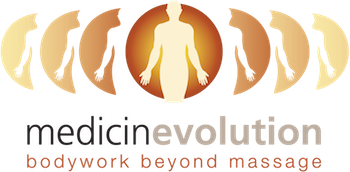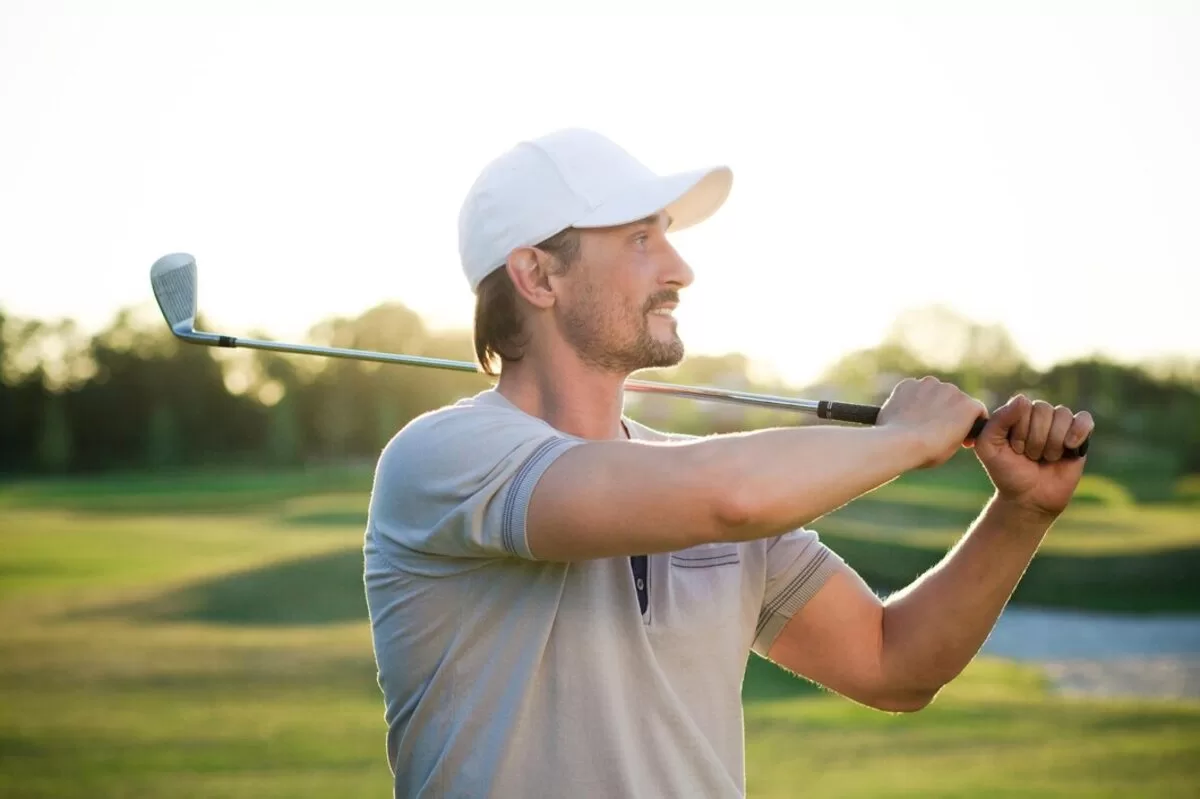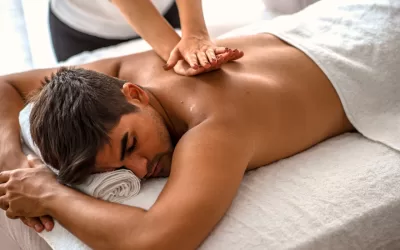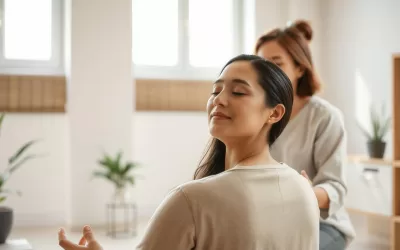The return of Tiger Woods was pretty phenomenal at The Masters Golf Tournament this past weekend. I love great come backs. Partly because that’s the passion that I serve in my clients, come backs to performance.
Google Golfer’s Elbow and you’ll find companies selling a billion different products under the guise of informing you first. As you probably already know information is not enough, and buying tools (for the most part) is like buying external products like new beds or endless pillows to fix an internal problem.
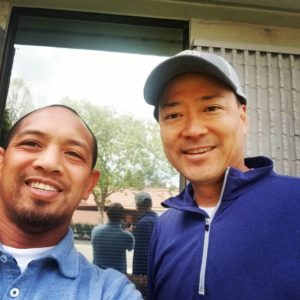
Don’t get me wrong, there are a few good tools, but IMO the best tools actually help change the internal environment, and information heavy articles don’t even come close to doing that justice. As a manual therapists my colleagues and I are baffled at why anatomy is even a thing that’s mandatory in education. Because, honestly, it’s not as important as other things, like understanding how pain works (and it’s a lightweight anatomical issue) the skill and sensitivity of touch, helping people create new movement patterns that break old ones.
Gymnastics instructors, martial arts instructors, etc don’t need anatomy. Why is the massage and bodywork field even thought of as part of the medical field.
Basically, when things are made medical practitioners and the public think that protocols are the proper application and they aren’t. Sometimes protocols work, when luck strikes. But for the most part, if you want something to shift you’ve got to go Beyond Protocol. And that’s what get’s my clients to where they want and need to be.
2 Step Movement Solution:
If you’re suffering from pain around your elbow, whether it’s golfer’s or tennis elbow you’ve been wrapped up in a certain repetitive motion. I can guarantee that you’re either twisting your forearm or tensing it often throughout your day. If you can become aware of doing one or both of these, that’s the first habit repetition you want to break.
Habits aren’t always easy to notice, they are so ingrained in us that we overlook how often we do them and how much impact they’ve had on us. The first step to change is ALWAYS, awareness. Become aware of the habit first. Learn as much as you can about it, not through Google, but through your own FELT experience.
The foundation of my system is Mindset, without a growth mindset there’s no room for change. I teach my clients is to expect pain, and actually, welcome it! This is the essence of awareness and getting to know the details of the issue that no professional or scan can offer.
The second thing you want to do is figure out what you do often, and do its opposite. The type of professional you go to will only offer their limited perspective. A massage therapist will tell you what’s tight. A physical therapist will tell you what needs to be strengthened, a chiropractor will tell you what’s out of alignment, and so the limitation of professions is apparent, their bias is slim and their solutions few. Your solution needs to be tailored to you. A combination of approaches will give you the best results, look at the issue with complexity and completeness.
If you rotate your forearm in one direction often, then practice rotating it in the opposite, sometimes it’s as simple as that.
FAQs About Golfer’s Elbow and Its Treatment
1. What exactly is golfer’s elbow, and how is it different from tennis elbow?
Golfer’s elbow, or medial epicondylitis, is a condition where the tendons on the inside of your elbow become inflamed, often due to repetitive wrist and forearm motions. Tennis elbow, on the other hand, affects the tendons on the outer side of the elbow. Both conditions share similar symptoms like pain and weakness but impact different sides of the arm.
2. What are the common symptoms of golfer’s elbow?
If you’re dealing with golfer’s elbow, you’ll likely feel pain on the inner side of your elbow that might extend down your forearm. Other symptoms include stiffness, weakness in your grip, and even a tingling sensation in your fingers. These signs are a clear indication that your tendons are crying out for relief.
3. Can repetitive motion really cause golfer’s elbow?
Absolutely. Repeated twisting, gripping, or flexing of your wrist can strain the tendons in your forearm, leading to golfer’s elbow. It’s common among golfers, sure, but other activities like typing, weightlifting, or even DIY projects can also trigger this condition.
4. How can I treat golfer’s elbow at home?
Start with rest—give your elbow a break from repetitive activities. Ice the area to reduce swelling, and gently stretch and strengthen your forearm muscles. Simple movements, like rotating your forearm in the opposite direction of repetitive habits, can make a world of difference.
5. Is professional treatment necessary for golfer’s elbow?
It depends on the severity. Mild cases often improve with self-care, but chronic pain might require professional help. Options range from physical therapy to manual therapy techniques that go beyond protocols, focusing on creating new movement patterns and restoring balance.
6. Can poor posture contribute to golfer’s elbow?
Yes, it can. When your posture is off, it puts extra strain on your muscles and tendons, making repetitive motions even more taxing. Keeping your shoulders relaxed and maintaining proper wrist alignment can help prevent unnecessary stress on your elbow.
7. Why do tools and gadgets often fail to treat golfer’s elbow?
Most tools focus on external solutions without addressing the root cause—your movement patterns and internal environment. While some gadgets might offer temporary relief, long-term improvement requires a mindset shift and tailored strategies that change how you move and use your body.
8. Are there any exercises that help relieve golfer’s elbow?
Yes! Stretching and strengthening exercises like wrist flexor stretches, forearm pronation and supination drills, and grip-strengthening routines are incredibly effective. But remember, the key is consistency and gradually increasing intensity without overdoing it.
9. Can mindset really affect recovery from golfer’s elbow?
Without a doubt. A growth mindset—one that welcomes challenges and embraces awareness—can speed up your recovery. Understanding and welcoming the discomfort as part of the healing process allows you to make meaningful changes to your habits and movements.
10. How long does it take to recover from golfer’s elbow?
Recovery time varies depending on the severity of the condition and how consistently you follow your treatment plan. Mild cases may improve in a few weeks, while more severe cases can take months. The secret? Patience, awareness, and sticking to a tailored approach that works for you.
This unique take on golfer’s elbow blends practical advice with a deep understanding of how the body works, ensuring you’re not just informed but also empowered to take action.
<script type="application/ld+json">{
"@context": "http://schema.org",
"@type": "VideoObject",
"name": "Golfer's Elbow and Choosing a Solution",
"description": "There are a ton of solutions for golfer's and tennis elbow, but I wanted to close the gap between the assessment and the protocol. Check out this video if you're struggling with your choice.",
"thumbnailUrl": "https://i.ytimg.com/vi/ziaoz-c7DDQ/default.jpg",
"uploadDate": "2019-04-19T01:42:13Z",
"duration": "PT6M8S",
"embedUrl": "https://www.youtube.com/embed/ziaoz-c7DDQ",
"interactionCount": "8"
<script type="application/ld+json">{"@context":"https://schema.org","@type":"FAQPage","mainEntity":[{"@type":"Question","name":"1. What exactly is golfer’s elbow, and how is it different from tennis elbow?","acceptedAnswer":{"@type":"Answer","text":"Golfer’s elbow, or medial epicondylitis, is a condition where the tendons on the inside of your elbow become inflamed, often due to repetitive wrist and forearm motions. Tennis elbow, on the other hand, affects the tendons on the outer side of the elbow. Both conditions share similar symptoms like pain and weakness but impact different sides of the arm."}},{"@type":"Question","name":"2. What are the common symptoms of golfer’s elbow?","acceptedAnswer":{"@type":"Answer","text":"If you’re dealing with golfer’s elbow, you’ll likely feel pain on the inner side of your elbow that might extend down your forearm. Other symptoms include stiffness, weakness in your grip, and even a tingling sensation in your fingers. These signs are a clear indication that your tendons are crying out for relief."}},{"@type":"Question","name":"3. Can repetitive motion really cause golfer’s elbow?","acceptedAnswer":{"@type":"Answer","text":"Absolutely. Repeated twisting, gripping, or flexing of your wrist can strain the tendons in your forearm, leading to golfer’s elbow. It’s common among golfers, sure, but other activities like typing, weightlifting, or even DIY projects can also trigger this condition."}},{"@type":"Question","name":"4. How can I treat golfer’s elbow at home?","acceptedAnswer":{"@type":"Answer","text":"Start with rest—give your elbow a break from repetitive activities. Ice the area to reduce swelling, and gently stretch and strengthen your forearm muscles. Simple movements, like rotating your forearm in the opposite direction of repetitive habits, can make a world of difference."}},{"@type":"Question","name":"5. Is professional treatment necessary for golfer’s elbow?","acceptedAnswer":{"@type":"Answer","text":"It depends on the severity. Mild cases often improve with self-care, but chronic pain might require professional help. Options range from physical therapy to manual therapy techniques that go beyond protocols, focusing on creating new movement patterns and restoring balance."}},{"@type":"Question","name":"6. Can poor posture contribute to golfer’s elbow?","acceptedAnswer":{"@type":"Answer","text":"Yes, it can. When your posture is off, it puts extra strain on your muscles and tendons, making repetitive motions even more taxing. Keeping your shoulders relaxed and maintaining proper wrist alignment can help prevent unnecessary stress on your elbow."}},{"@type":"Question","name":"7. Why do tools and gadgets often fail to treat golfer’s elbow?","acceptedAnswer":{"@type":"Answer","text":"Most tools focus on external solutions without addressing the root cause—your movement patterns and internal environment. While some gadgets might offer temporary relief, long-term improvement requires a mindset shift and tailored strategies that change how you move and use your body."}},{"@type":"Question","name":"8. Are there any exercises that help relieve golfer’s elbow?","acceptedAnswer":{"@type":"Answer","text":"Yes! Stretching and strengthening exercises like wrist flexor stretches, forearm pronation and supination drills, and grip-strengthening routines are incredibly effective. But remember, the key is consistency and gradually increasing intensity without overdoing it."}},{"@type":"Question","name":"9. Can mindset really affect recovery from golfer’s elbow?","acceptedAnswer":{"@type":"Answer","text":"Without a doubt. A growth mindset—one that welcomes challenges and embraces awareness—can speed up your recovery. Understanding and welcoming the discomfort as part of the healing process allows you to make meaningful changes to your habits and movements."}},{"@type":"Question","name":"10. How long does it take to recover from golfer’s elbow?","acceptedAnswer":{"@type":"Answer","text":"Recovery time varies depending on the severity of the condition and how consistently you follow your treatment plan. Mild cases may improve in a few weeks, while more severe cases can take months. The secret? Patience, awareness, and sticking to a tailored approach that works for you."}}]}</script>